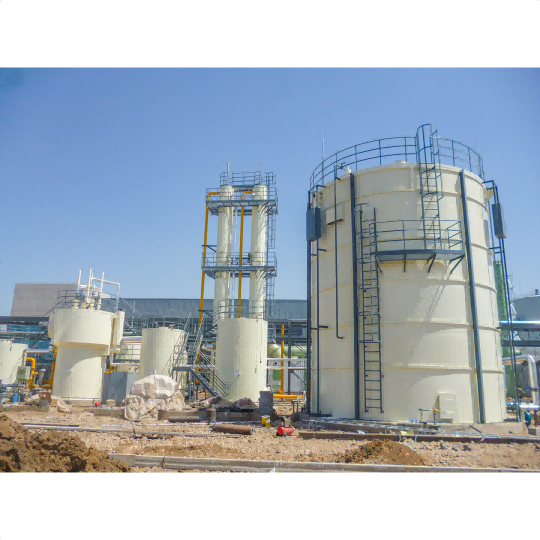Lightweight clay bricks refer to lightweight refractory products with an aluminum content of 30% to 46%. The main raw materials are clay clinker or light clinker and plastic clay. They are usually produced by combustible methods, and can also be produced by chemical methods or foam methods to form a porous structure.
The ingredients are mixed with water to make plastic clay or mud, which is molded by extrusion or pouring, and fired in an oxidizing atmosphere at 1250-1350°C after drying.
The bulk density of commonly used lightweight clay bricks is 0.7-1.2g/cm3, the compressive strength is 2.0-5.9Mpa, and the thermal conductivity is 0.221-0. 442W/(m·K) (1350°C).
Lightweight clay bricks have a wide range of uses, mainly used in various industrial kilns as heat insulation materials that do not contact molten materials and have no erosive gas effect, and the service temperature is 1200-1400 °C.
The Chinese standard (GB3994-1983) is divided into NG-1.5, NG-1.3a, NG-1.3b and other grades according to the volume density, and lists different models of clay heat-insulating refractory bricks.
| Name: | Lightweight Refractory Brick |
| Form: | Solid |
| Color: | Yellow and White |
| Refractory Temperature: | 1770~2000℃ |
| Compressive Strength: | 60Mpa |
| Bulk Density: | 2.0-2.40g/cm³ |
| Operating Temperature: | 1830°C |
| Apparent Porosity: | ≤16% |
| Refractory Material: | Clay |
| Whether Hazardous Chemicals: | No |
| Custom Processing: | Yes |
| Type: | Refractory |
| Scope of Use: | In The Construction of Fire Kilns, In The Ceramic Industry |

























Yes, our experienced engineers can design the reheating furnace according to the customer's existing production line to achieve as high efficiency as it could.
Yes, we can provide related previous reference.
We offer installation and commissioning services for our products, which can be provided through on-site dispatch or remote video assistance.
Yes, we can provide customized solutions to meet your specific needs.